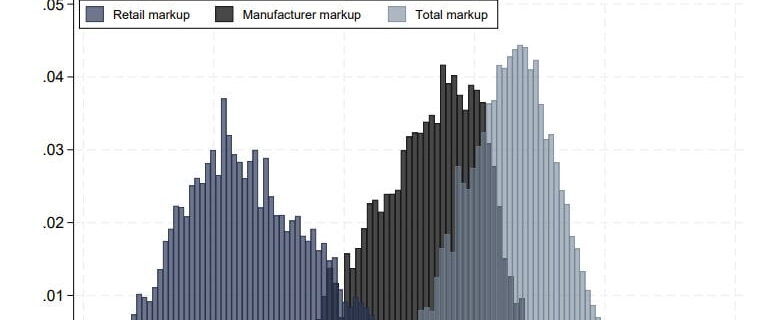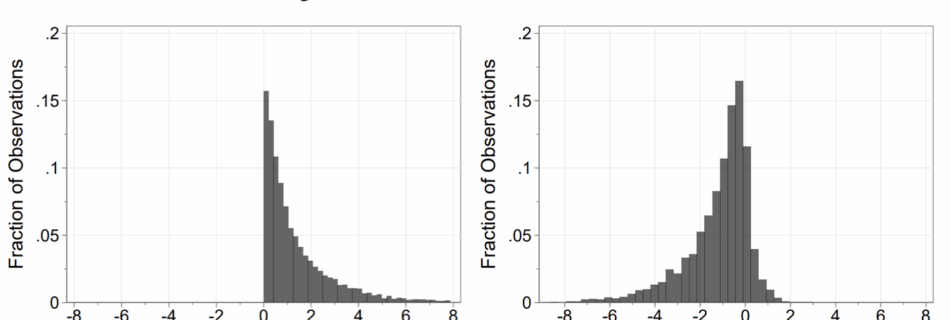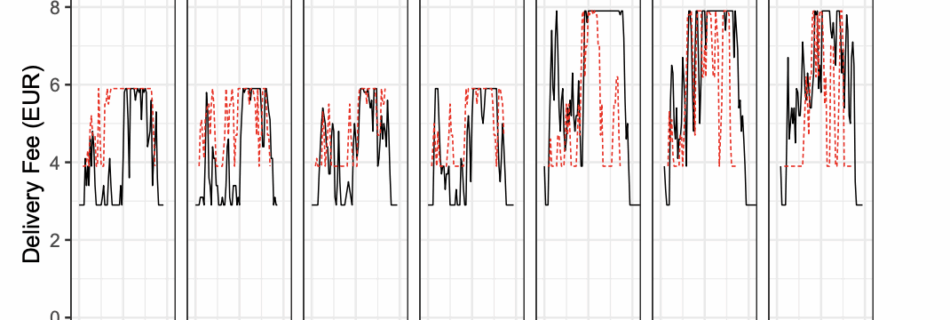Markups and Cost Pass-through Along the Supply Chain
Santiago Alvarez-Blaser, Alberto Cavallo, Alexander MacKay, Paolo Mengano
We study markups and pricing strategies along the supply chain. Our unique dataset combines detailed price and cost information from a large global manufacturer with matched retail prices collected online for the period July 2018 through June 2023. We show that total markups—reflecting the difference between retail prices and production costs—are stable over time, despite the inflationary period at the end of the sample. Along the supply chain, manufacturer and retail markups are negatively correlated. For the most part, we find similar patterns across countries, though there is substantial heterogeneity in the split of markups between the manufacturer and retailers. Our analysis also reveals divergent pricing behaviors in response to cost shocks. The manufacturer adjusts prices more quickly than retailers and appears to more fully incorporate idiosyncratic cost shocks to specific products. Both types of firms respond more quickly to expected costs than to unexpected costs.



